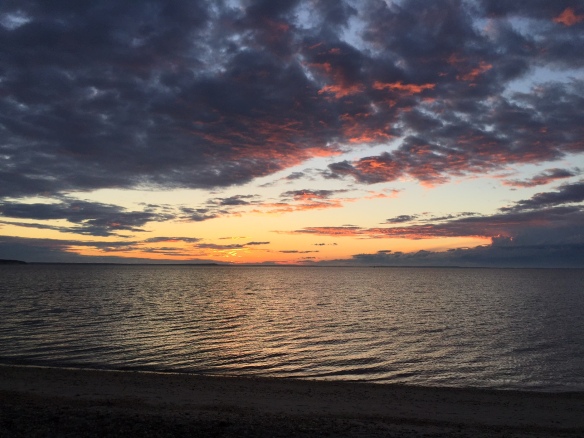
PHILADELPHIA WAS A POIGNANT PLACE to spend time in the immediate aftermath of the election (after casting my vote in NYC, of course).
Everywhere you look, there are statues and portraits of presidents and patriots, reminders of genius, courage and high-flying ideals. As you walk the very streets and pass the very buildings where our country was founded, you have to wonder where our new President-elect fits into the picture. At what point, exactly, did the Roman Empire begin to fall, and are we there yet?
Certainly there were internecine battles as vicious as the recent campaign in the run-up to the Revolution, and after. The Civil War was far more horrific than our recent electoral War Between the States, and we survived that.
So I have to say that, yes, the perspective gained by walking Philadelphia’s über-historic, über-charming streets (and Uber-ing through them as well, as a matter of fact) helped to quell the panic.
I had a visitor from Brooklyn, a friend who couldn’t bear to spend the first few days of the new reality alone. We steeped ourselves in great art at the Pennsylvania Academy of Fine Arts, the country’s first art museum; visited the new Barnes Foundation and were moved by its monumental modern architecture and landscaping, overwhelmed by the sheer number of masterpieces; took an impromptu tour of the 18th century Powel House in Society Hill, a fine and under-visited house museum; checked out the Italian Market and the Maxfield Parrish-designed, L.C. Tiffany-executed stained glass mural at the Curtis Publishing building in Washington Square; and ate and drank at any number of restaurants and watering holes.
They say you can get used to anything, and indeed the initial shock has begun to taper off. But last week in Philly, we were tourists in a strange land. There was something especially surreal about that first post-apocalypse day, when people in blue Philadelphia’s cafés and cobbled streets exchanged rueful glances and sad smiles, the rain fell, and it seemed the world wept.

Below, the high Victorian splendor of the Pennsylvania Academy of Fine Arts, founded in 1876, filled with all-American art.



Architects Frank Furness and George Hewitt pulled out all the stops.

There are modern works too, including some great examples of the Ashcan School, O’Keefe, Hopper, Feininger et al.
We checked out a temporary exhibition, on through January, of Thomas Eakins’ provocative, mostly nude photographs, an early exploration of the new medium, below. Eakins, a Philadelphia painter, taught at PAFA, then and now also an art school, in the late 19th and early 20th centuries. (And we hippies thought we invented skinny-dipping.)

The powerful architecture and landscaping around the new Barnes Foundation building, below, off Benjamin Franklin Parkway (Philly’s Museum Mile), make it difficult to take a bad picture.

Photography is not allowed inside the museum, which represents one man’s collection of masterpieces (180+ Renoirs, Cezannes by the dozen, Matisses galore, Rousseaus, Modiglianis, Picassos, plus ancient Greek pottery, Navajo silver, other metalwork and furniture), all mounted for exhibit in rooms that recreate exactly the suburban home of Albert Barnes in precisely the arrangement he left at his death in 1951.
Below, houses that caught my eye, mostly in Washington Square West and Society Hill.






Here’s one that invites you in, as did the site manager at the 1765 Powel House, below, when we approached her at the door to inquire what time the next tour was. “I guess there could be one right now,” she said.



The ballroom, above. Washington danced here.

Jennifer Davidson, our lovely guide to the Powel House.
Below, one of Philadelphia’s best-kept decorative arts secrets: the glowing Maxfield Parrish/L.C. Tiffany stained glass mural, some 40 or 50 feet across, in the lobby of the Curtis Publishing building at the northeast corner of Washington Square. Called “The Dream Garden,” it was created in 1914-15 and is free for the viewing.


Some flavorful neighborhood scenes: a South Street cigar shop…

my go-to cafe, the Hungry Pigeon, in quiet Queen Village…


the nearby Italian Market, the likes of whose permanent outdoor stalls I haven’t seen in any other city…


a Polish restaurant in Port Richmond in north Philadelphia, a spot I have been known to hit on my way out of town for the cheese and potato pierogies with fried onions and sour cream, below. (Well, come on, after all that walking?!)


Here are just two of the literally thousands of building-size murals in Philly, a result of its unique Mural Arts Program, both offering glimpses into fantastical worlds: top, Center City; bottom, Bella Vista.


“Today I pray for…” says the blackboard outside Old St. Joseph’s Church in Society Hill, a tin pail of chalk at the ready.






















































































